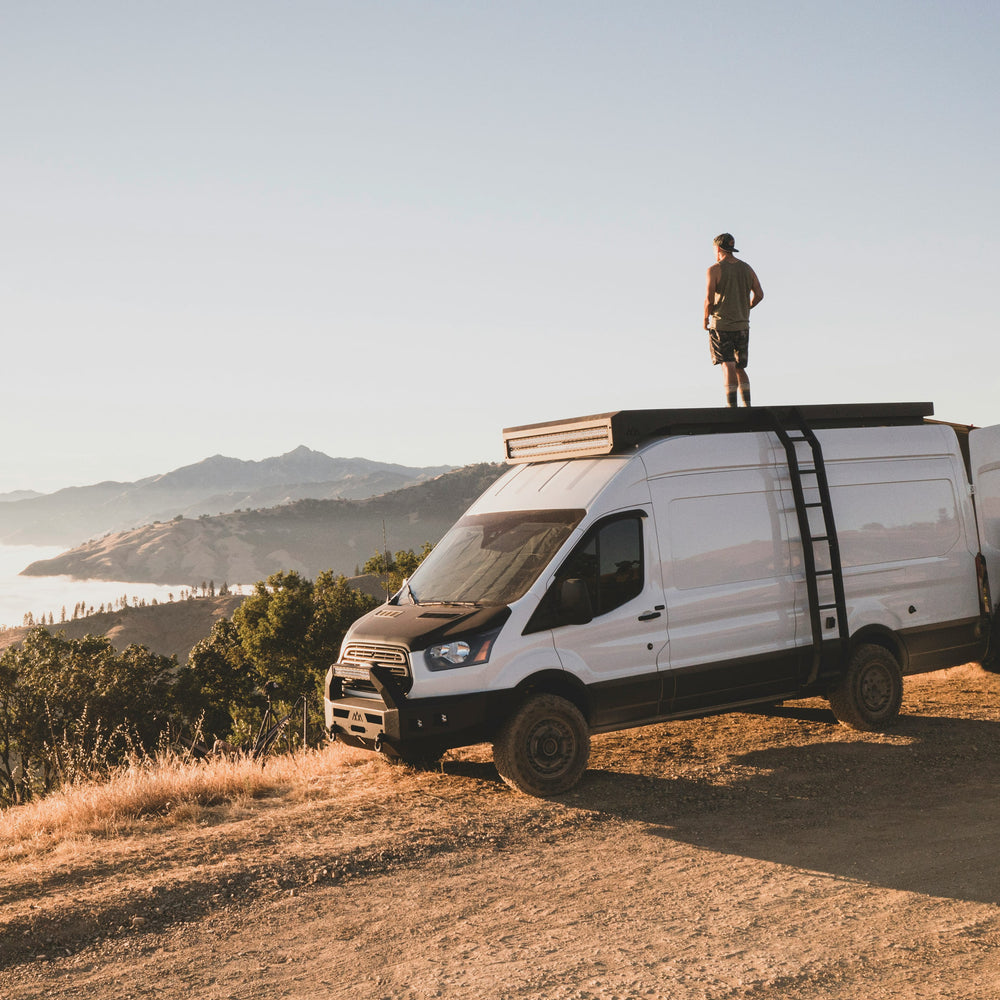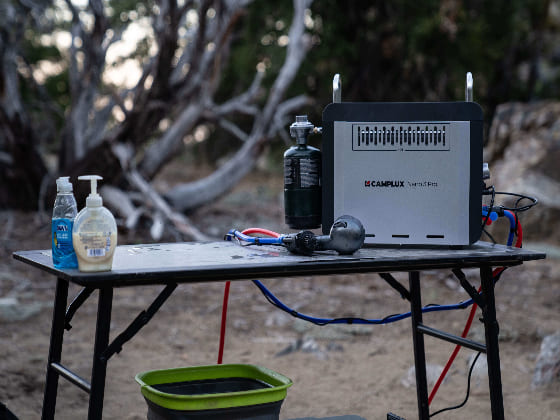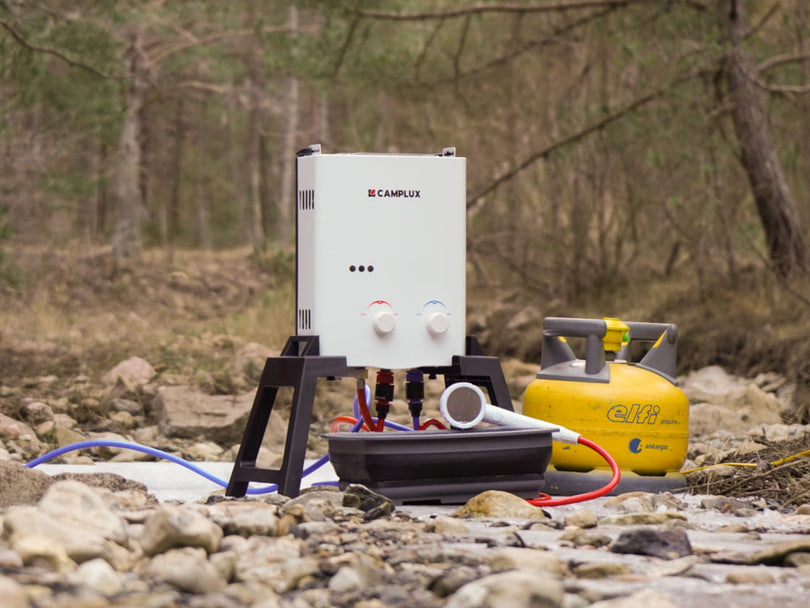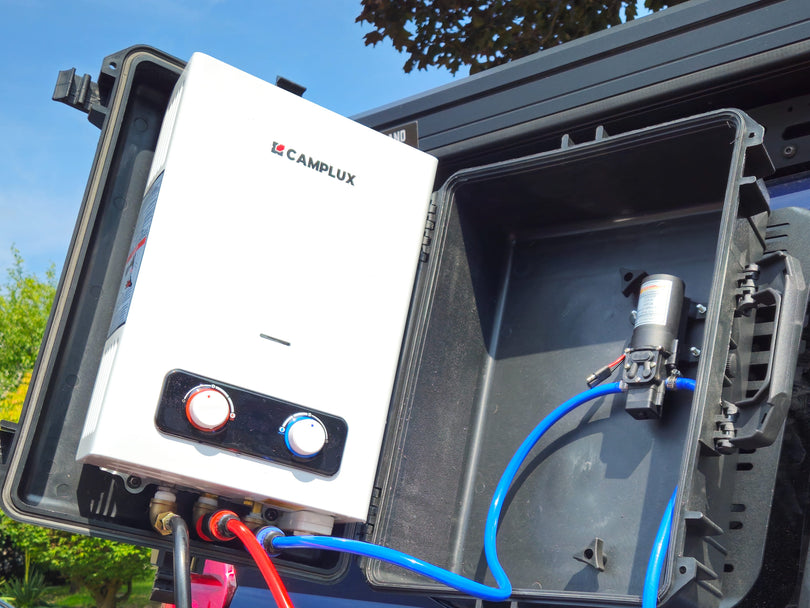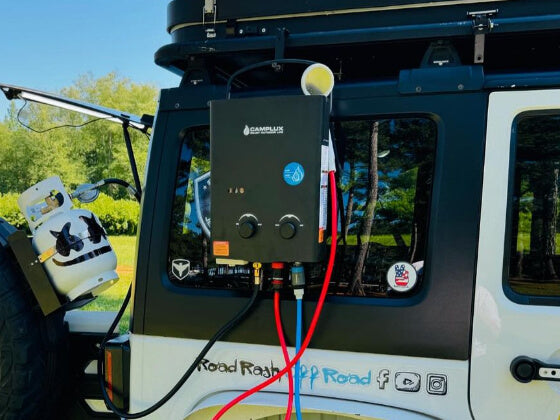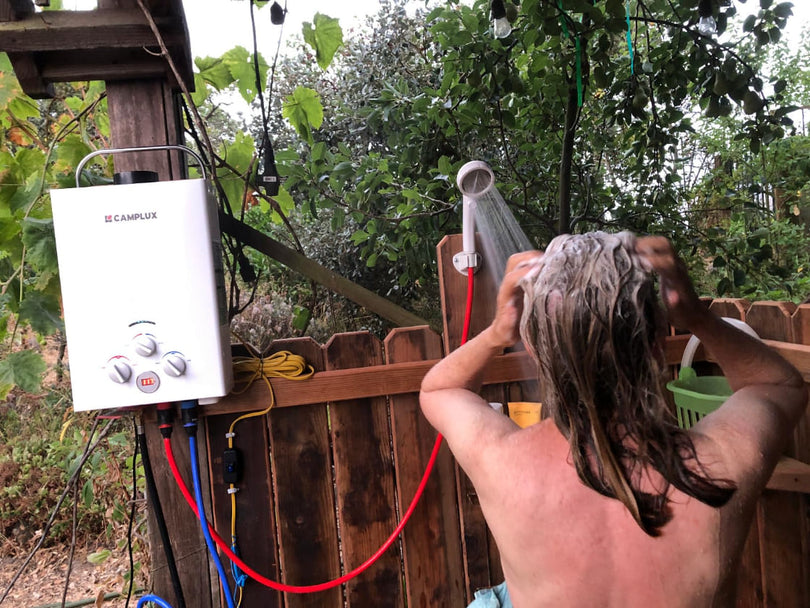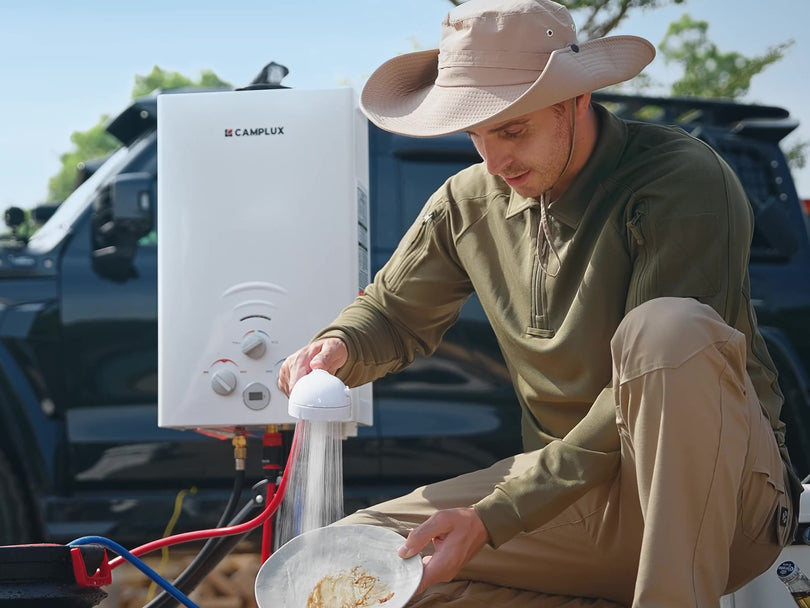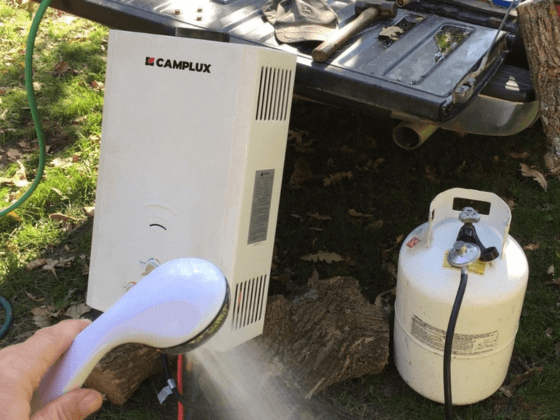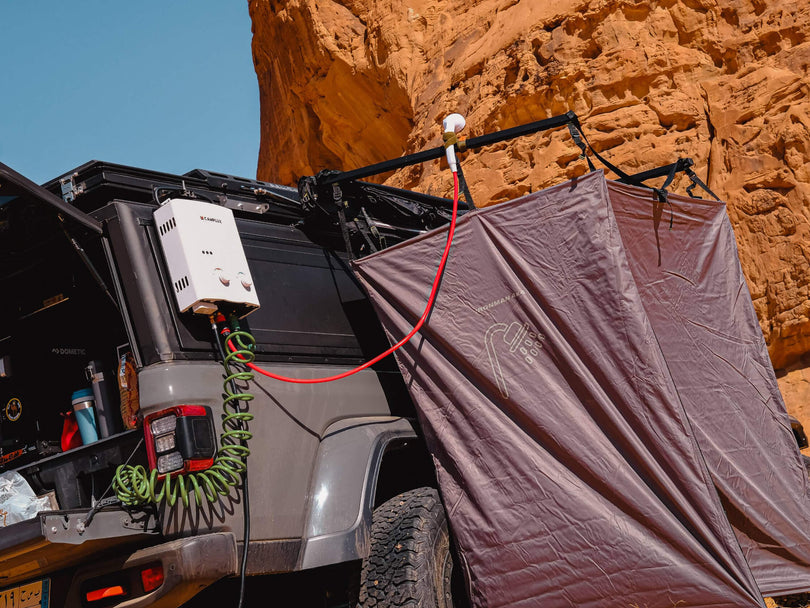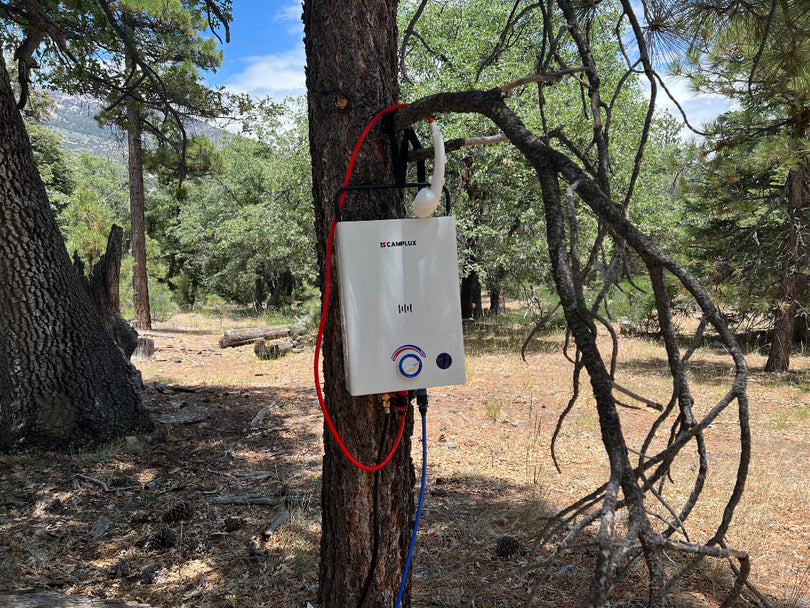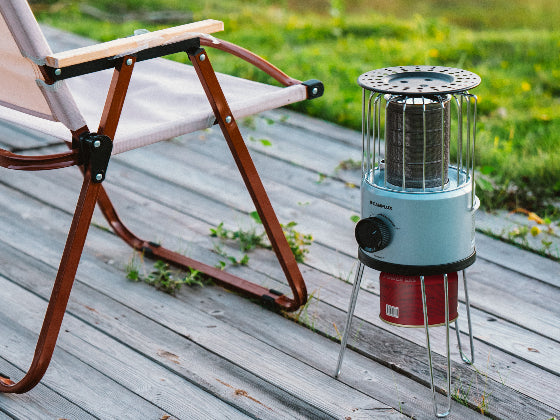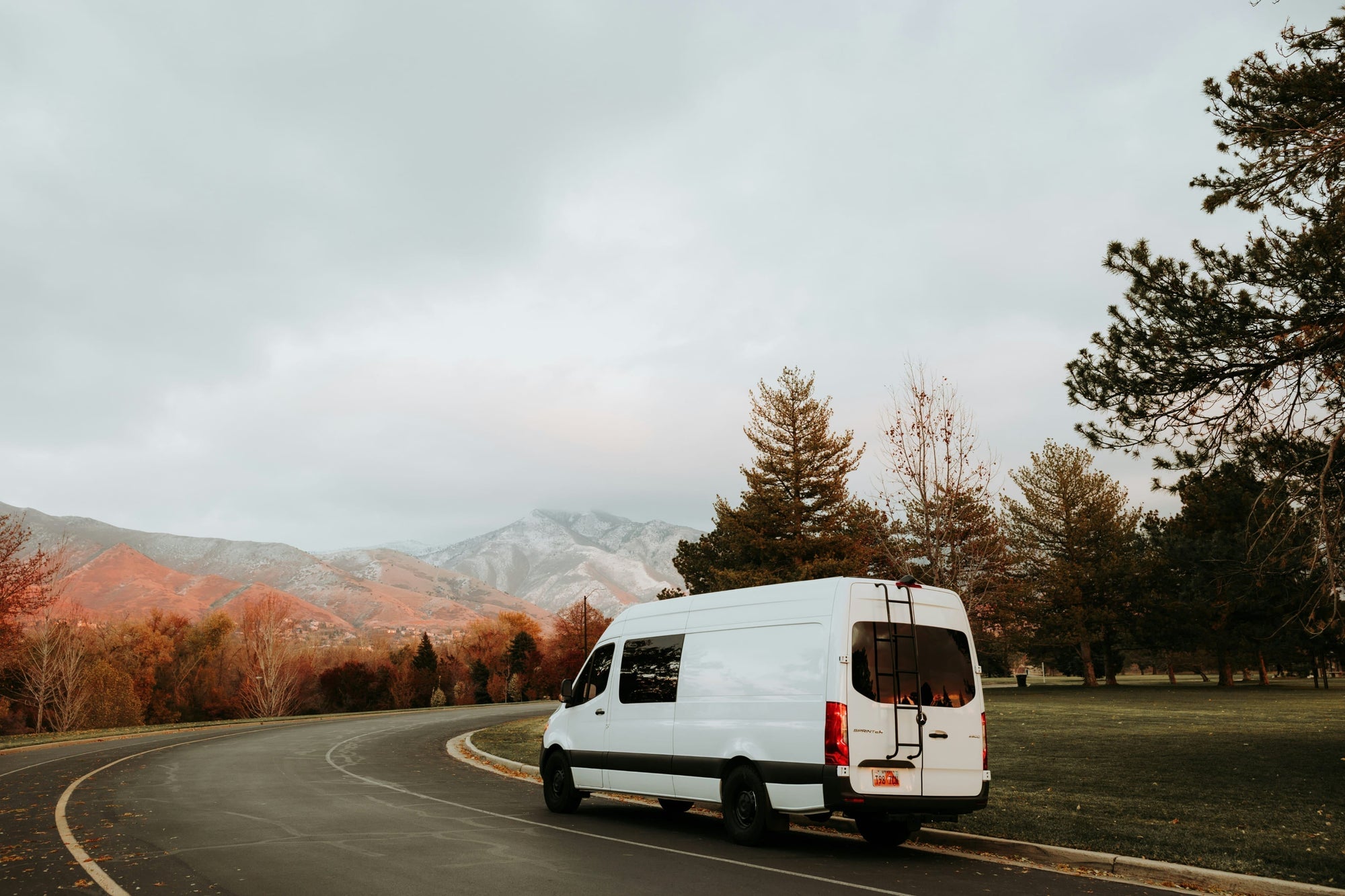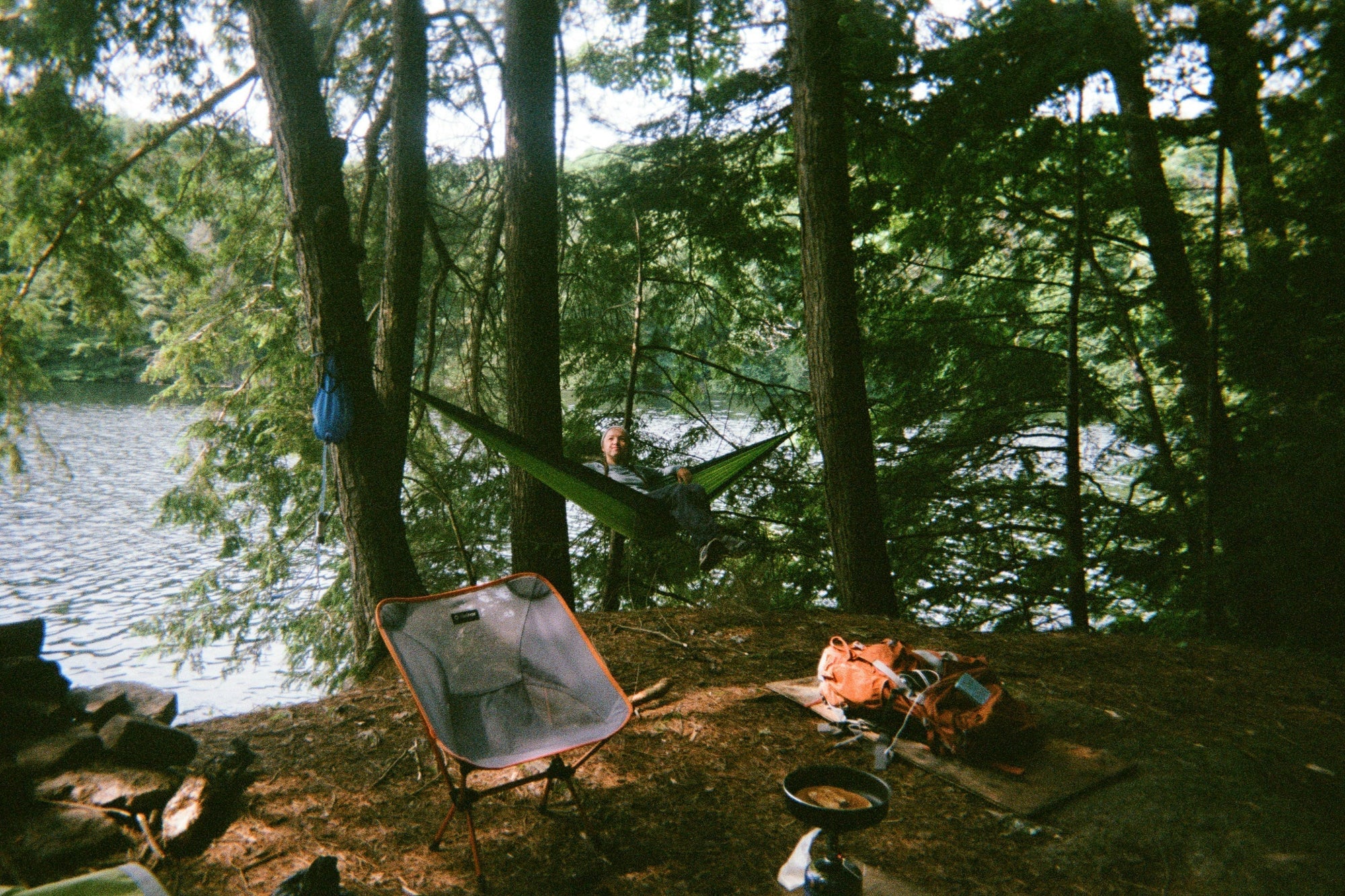Having hot water on tap during your outdoor adventures is a game-changer, but it shouldn't break the bank. Whether you're camping in the Highlands, touring in a campervan, or washing down your horses on the farm, an efficient outdoor water heater can provide comfort while keeping costs low. In this guide, we'll explore how to reduce energy bills with your outdoor water heater and highlight some top Camplux models (Nano 3 Pro, AY132B, F5, and F10) known for their efficiency. We'll also weave in practical camping and campervan lifestyle tips, so you get the most out of your water heater without wasting a drop of gas or a penny of your budget.
Understanding Portable Heater Efficiency
Before diving into specific tips, it helps to understand why modern portable water heaters are more efficient than traditional home units. Unlike old tank water heaters that keep water hot all day (using energy constantly), Camplux portable water heaters heat water on-demand – only when you need it. This tankless design means no standby heat loss and far less fuel consumption.In other words, when you're off-grid camping, you're not burning through propane just to keep unused water hot. Every bit of heat goes into the water you actually use. This on-demand system is the backbone of saving energy (and money) with an outdoor water heater. Moreover, Camplux outdoor water heaters are engineered with energy-saving features. For example, some models include self-modulating technology that adjusts gas output based on water flow, so you never use more fuel than necessary.All these innovations contribute to lower gas usage and smaller energy bills. Now, let's get into practical tips for maximising these advantages in real camping and caravan life.
Choose the Right Camplux Model for Your Needs
One of the first steps to saving energy is choosing an outdoor water heater that fits your usage. Camplux offers a range of models tailored to different scenarios. Picking the right one means you'll have ample hot water without excessive waste. Here's a quick look at our four highlighted models and how they can save you money:

Versatile Outdoor Hot Shower Solutions: The Camplux AY132B (5L portable gas water heater) is a compact unit perfect for campsites, RV trips, barn yards, and even washing horses. Its tankless design provides 5 litres of hot water per minute within seconds, so you're never heating water you don't use. Weighing only 4.54 kg with a foldable handle, the Camplux AY132B is easy to carry and set up anywhere. This model's energy-saving technology ensures you get instant hot water for outdoor showers or pet baths without skyrocketing your propane usage. If you mainly need a shower for a couple on a camping trip or occasional use, a smaller unit like the AY132B means you won't burn extra gas heating a huge capacity unnecessarily. Its simple controls and safety features also prevent waste – for instance, it ignites with 2 D-cell batteries only when water flows, so no pilot light burning fuel all day.

Portable and Efficient Design: For campers on the move, the Camplux Nano 3 Pro is a star choice. This ultra-portable water heater is built for off-grid efficiency. It's incredibly lightweight (roughly 4–5 kg) and features a 3-level adjustable handle for easy carrying and compact storage. A unique aspect of the Nano 3 Pro is its built-in 4,000 mAh battery, which means it can pump and heat water without needing external power – ideal for remote spots. From an energy perspective, the Nano 3 Pro optimises every joule: it recharges its battery during operation (e.g. via your vehicle or a solar pack) and only burns propane when you open the tap. If you're showering in the woods or washing up at the beach, the water heater fires up only for those few minutes of use, minimizing gas consumption. Plus, its high efficiency burner (around 20,000 BTU) is designed to heat water quickly so you don't run it longer than necessary. In short, choose a smaller, portable unit like the Nano 3 Pro for mobile outdoor living – you'll get sufficient hot water with minimal fuel. It's perfect for solo campers or couples who value both convenience and thriftiness.

Family Camping Comfort on a Budget: Planning to shower the whole family at the campsite? The Camplux F5 (5L) might be your best friend. This First Series model boasts a 34,000 BTU burner and 1.32 GPM flow which can comfortably handle back-to-back showers. Yet, it remains highly efficient (rated A+ energy class). The F5 delivers hot water in 5 seconds and maintains it as long as needed, without a storage tank to drain your gas. Features like its 2-in-1 control knob and LED display allow you to set just the right temperature – no overheating and no need to mix in cold water (which can be a source of energy waste). This means you use only the amount of gas required for a comfortable 38–45°C shower and nothing more. For a family, that can add up to big savings over a week-long holiday. The image above shows an “upgraded portable water heater” in action – it's as simple as hanging the unit, turning the knob, and enjoying a steaming shower in nature. Because the F5 heats water so efficiently and only when needed, you won't feel guilty letting the kids rinse off after a muddy hike. And safety shut-offs (for flame failure or overheating) give peace of mind that fuel won't flow unnecessarily. In summary, match your water heater to your group size: the F5 is great for families or groups, providing ample hot water efficiently so no one ends up taking a cold shower or wasting gas.

High Capacity without High Bills: If you have greater hot water demands – say you're running an outdoor kitchen, a mobile home shower, or multiple tasks at once – the Camplux F10 (10L) is built for the job. Importantly, it delivers up to 10 L/min (2.64 GPM) of hot water on demand while still conserving energy. The F10 has a powerful 68,000 BTU output to give you home-like performance off-grid, but thanks to Camplux's design it uses fuel only when necessary. The image above highlights its precise temperature control and dual-knob design. This allows you to fine-tune the flame and water flow to avoid overheating (which would waste gas). Even at higher flow rates, you can set a moderate temperature so you're not burning excess propane. Tip: With a larger water heater like the F10, use just the flow you need – don't run it at full 10 L/min if a 6 L/min shower is enough. Lower flow with a moderate flame will reduce gas usage and still give you a satisfying hot shower. The F10 also shines for semi-permanent setups (cabins, barns, campervan conversions) because it's built to be efficient across a range of pressures and flow demands. If your campsite has strong water pressure or you use a high-power pump, the F10 adjusts accordingly to avoid wasting fuel. In essence, even for big jobs, Camplux's largest portable water heater saves energy by being smart and adjustable. You get the hot water you need, and none of the fuel waste you don't.
Bottom line: selecting a Camplux model that matches your needs prevents energy waste. An undersized water heater might force you to run it longer (not efficient), while an oversized water heater might burn more gas than needed for small tasks. Camplux's range ensures you can pick the perfect fit – from ultra-compact to high-output – each designed with efficiency in mind.
Smart Usage Habits to Lower Your Energy Bills
Choosing an efficient water heater is step one; step two is using it wisely. Adopting smart habits in how you operate your outdoor water heater can dramatically cut energy consumption. Here are some practical tips:
-
Heat Water Only When Necessary: It sounds obvious, but don't leave the water heater running if you're not actively using hot water. With tankless units, get everyone or everything ready for the shower or washing session, then fire it up and use continuous hot water efficiently, rather than turning it on and off repeatedly or letting it idle. For example, if two people need consecutive showers, plan them back-to-back so the water heater isn't cooling down and re-firing multiple times (which can use extra gas). The good news – Camplux water heaters ignite instantly and have steady flow, so there's no need to run water waiting for heat once it's on. As soon as you're soaped up and rinsed, turn off the shower – the burner will extinguish immediately, saving fuel.
Set a Moderate Temperature: Dialling the temperature to a reasonable level can save a lot of gas. It's more efficient to heat water to, say, 40°C directly, rather than blasting to 60°C and then mixing in cold. All Camplux models let you adjust gas flow (flame size) and water flow. Tune these so that your outgoing water is at a usable temperature without dilution.This might mean turning down the gas a bit in summer or when the water coming from your source is warmer. By not overheating the water, you use less propane. Many models like the F5 and F10 have an LED or digital display showing the temperature in real time, which helps find that sweet spot. As a bonus, a moderate setting is safer for kids and pets too. Every degree you lower the thermostat saves energy – and with a tankless, it's immediate savings.
-
Use the Showerhead's Flow Control: Camplux portable water heaters typically come with a showerhead attachment that often has an ON/OFF trigger or flow adjustment. Get into the habit of using that trigger while lathering or shampooing (just like the navy shower method). Briefly shutting off or pausing the flow will also shut the burner off (in most models), which can save a surprising amount of gas over a week of camping. When you're ready to rinse, flip it back on and warm water resumes. These little pauses prevent heating water that literally goes down the drain while you're not actively rinsing. Even a 5-minute shower can be cut to 3 minutes of running water with this tactic, nearly halving fuel use for that shower without sacrificing cleanliness.
-
Leverage Nature's Warmth: If possible, use naturally warmer water sources or times of day. In a campervan setup, for instance, water tanks warmed by the sun through the day give the water heater a head start – it doesn't have to raise the temperature as much. Also, doing dishes or showers in the late afternoon when ambient water is warmer will consume less gas than early morning cold water. Of course, you can't always choose, but when you can, let the sun pre-heat your water a bit (even leaving a jerry can in the sun) and you'll notice the water heater needs a smaller flame to reach the desired hot output.
-
Don't Waste Hot Water: This might be common sense, but worth noting. In camp life, every litre of hot water is paid for by your propane. So try to multi-task and conserve water. For example, wash dishes in a basin with the plug in – don't run hot water continuously. Use a low-flow setting on the shower if you can still get comfortable warmth. And if you have extra hot water in a bucket, use it – maybe wash your face or rinse gear – rather than letting it cool off unused. By being mindful that hot water is a resource, you'll naturally avoid waste and stretch each gas cylinder further.
-
Turn Off Gas Supply When Not in Use: When you pack up or won't need hot water for a while, turn off the propane at the bottle. Camplux water heaters have automatic shut-off features, but as an added safety and savings measure, cutting the supply ensures there's no chance of a slow leak or a pilot (in models that have a tiny pilot flame) using fuel. Most portable models like these don't have a standing pilot flame (they use electronic ignition each time), which already saves gas. But disconnecting or turning off the gas between uses is a good habit for both safety and eliminating any minor gas draw.
By implementing these usage habits, you complement the water heater's built-in efficiency. Campers often report that a 5 kg propane cylinder lasts dozens of showers and weeks of washing when they use these tricks. Little changes in behaviour – like shorter showers and moderate temperature – truly compound into noticeably lower energy bills on your propane refills.
Maintenance and Setup Tips for Efficiency
Proper care and installation of your outdoor water heater can also influence how efficiently it runs. A well-maintained water heater works at its best, using every bit of energy to heat water (rather than fighting against clogs or heat loss). Similarly, setting your water heater up optimally at the campsite ensures you aren't wasting gas. Keep these points in mind:
-
Position the Water Heater Wisely: When you set up your water heater outdoors, try to shelter it from strong winds. Wind can cool the flame or even blow it out, causing the unit to use more gas to maintain temperature. Using the water heater's included wind shield or placing it in a spot with natural windbreak (like beside your campervan or a hedge) will improve its efficiency. Also, keep the unit as close as safely possible to your water source and point of use. The shorter the hose runs, the less heat loss occurs in transit. In cooler UK weather, an insulated hose or simply a shorter hose means water stays hot all the way to the showerhead, so you won't crank up the flame to compensate for heat lost along a long, cold hose.
-
Use the Right Pump (if needed): Some Camplux models (like the Nano 3 Pro and F10 in pro kit form) come with water pumps for drawing from a stream or jerry can. Using the pump at the appropriate pressure can save energy. Too weak a water flow and you might have to reduce gas flow to avoid scalding (since water is moving slowly through the water heater and can overheat). Too strong a flow and you might max out the burner to heat the water in time. Aim for a moderate, steady flow as recommended (e.g. 2–6 L/min). Camplux's pumps and water heaters are often well matched; if you pair a different pump, ensure it provides pressure within the water heater's efficient range (usually around 1–10 PSI for portables). This balance means the water heater can run in its optimal combustion range, giving you the hottest water for the least gas. The Camplux F5 and F10 have minimum pressure requirements of only 0.25 bar (roughly 3.6 PSI), so even a low-power pump will do – you won't waste fuel due to high pressure.
-
Keep the Burner and Showerhead Clean: Over time, especially with frequent camping, your water heater's burner ports can get a bit sooty or the showerhead can accumulate mineral deposits. A dirty burner can lead to incomplete combustion – meaning not all fuel burns cleanly, which is inefficient and can cause soot. Every now and then, inspect the gas burner slots for debris or soot (when the unit is cool!) and wipe or gently brush them clean. Likewise, if your showerhead's flow seems reduced, soak or clean it to remove limescale. Proper flow ensures the water heater senses water correctly and burns at the right rate. Camplux designs their units for outdoor conditions, but a little TLC keeps them running like new. Clean burners and heat exchangers = optimal heat transfer, so more of the gas turns into hot water, not lost in unburnt residue.
-
Drain and Winterise After the Season: UK campers know how damp and cold it can get. If you're not using the water heater in winter, drain it completely before storage (open the drain plug and let all water out). This isn't directly about daily energy use, but it prevents damage like frozen water cracking the water heater. A damaged water heater is an inefficient one (or non-working, which could force you to buy a new unit). By taking care of it in the off-season, you ensure it remains efficient year after year. An efficient appliance simply uses less energy overall. For detailed guidance on winter care, see our blog on “Winterising Your Camplux Water Heater: A UK Guide” – it's full of tips to protect your gear in cold weather.
-
Follow Installation Guides: When setting up your water heater, always follow the manual or a trusted guide. Proper installation (secure gas connections, correct regulator, adequate ventilation) not only keeps you safe but also guarantees the water heater runs under the conditions it was designed for. Camplux provides clear instructions – if you're unsure, check out our How to Install a Camplux Outdoor Water Heater in the UK (an in-depth guide in blue text on our blog) which walks you through the process step by step. An efficiently installed system will deliver the right mix of gas and air to the burner and the right flow of water through the exchanger, achieving the promised energy savings. Similarly, our Step-by-Step Guide: Setting Up Your Camplux Portable Water Heater (see blue text internal link) offers handy tips on assembly and accessories that can enhance efficiency (like using the correct gas hose length and ensuring tight fittings). Taking the time to install and set up properly is an upfront effort that pays off with consistent performance and lower fuel use.
Regularly Check for Leaks or Issues: Make it a habit to briefly inspect your hoses and connections each trip. A small gas leak obviously wastes fuel (and is dangerous). Use soapy water on connections to check for bubbles if you suspect any leaks when setting up. Also ensure the O-rings and rubber washers in your gas regulator and shower connections are in good condition (the Camplux kits usually include spares). A tight system means all the gas goes into heating water as intended. If you ever notice the water heater behaving oddly – e.g. water not getting as hot as before – it might need a simple maintenance fix rather than you cranking up the gas. Camplux support can help troubleshoot issues; resolving them will likely improve efficiency again.
By maintaining your water heater and setting it up optimally, you create the best circumstances for it to run efficiently. Think of it like keeping your car's tyres pumped up for better mileage – a little effort and awareness, and you get more kilometres per litre. Here, it's more minutes of hot water per gas cylinder.
(For more on upkeep, you might enjoy our internal post on Routine Maintenance Tips for Camplux Outdoor Water Heaters, which is another article available on our blog.)
Embrace the Camplux Outdoor Lifestyle
Saving energy with your outdoor water heater isn't just about penny-pinching – it's about being able to enjoy the outdoors longer and more sustainably. When you know your hot showers and dish washing aren't draining the gas bottle, you can relax and immerse yourself in the camping experience. Camplux's ethos of “Enjoy Outdoor Life” is built on gear that enhances comfort efficiently.
Picture this: you've set up camp by Loch Lomond, fired up your Camplux water heater after a day of hiking, and everyone takes a quick, blissfully warm shower with minimal gas used. No shivering, no massive propane bill – just comfort. By following the tips above, you might be surprised at how little gas a weekend of camping can use. Many campers report running a Camplux water heater for an entire week on a single LPG cylinder, thanks to on-demand heating and mindful use.
Lastly, don't forget to leverage your outdoor water heater's versatility (as shown in the earlier image with “Outdoor Hot Shower Solutions”). These units aren't just for showers. You can fill a basin with hot water to do laundry in your campervan, hose down muddy dogs (who definitely appreciate warm water!), or even use hot water for cooking and cleaning to save fuel on your stove. It's all about getting the most value out of every bit of energy. The more tasks you can accomplish with your efficient water heater, the more you offset energy usage elsewhere.
Conclusion
Living the campervan or camping life in the UK comes with endless rewards – and with the right gear and knowledge, high energy bills don't have to be one of them. Camplux's range of portable outdoor water heaters (from the tiny Nano 3 Pro to the mighty F10) are designed to give you modern comforts off-grid while keeping fuel consumption low. By choosing the model that suits your needs and applying the usage and maintenance tips we've discussed, you'll enjoy hot water on demand and spend less on propane in the long run.
Remember, reducing energy bills is about efficiency and smart habits. Little tweaks like shorter showers, proper temperature settings, and routine maintenance can cut your gas usage significantly. Over an extended road trip or a full camping season, those savings are substantial – money you can put towards your next adventure (or extra marshmallows for the campfire!).
We hope these tips help you make the most of your Camplux outdoor water heater. Here's to many warm showers under the stars, powered by efficient tech and savvy know-how. Stay warm, stay frugal, and happy camping!
Internal Resources: For further reading, be sure to check out our blue-text guides like How to Install a Camplux Outdoor Water Heater in the UK and the Step-by-Step Guide: Setting Up Your Camplux Portable Water Heater, as well as our comparison on Camplux vs Traditional Water Heaters for more insight into energy savings. By educating yourself and using your gear wisely, you'll become an expert at outdoor living comfort with minimal energy cost. Cheers to a hot shower and a lower bill!
